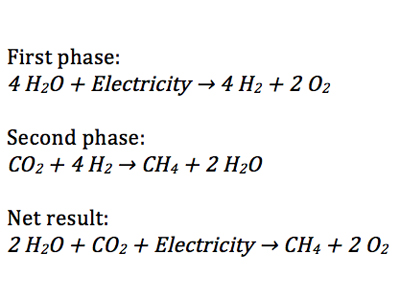A startup at the University of Chicago converts renewable energy into methane using microorganisms

One of the main obstacles to the widespread introduction of solar panels and wind turbines is the lack of storage of excess energy that they produce. Power-to-gas, a technology developed at the University of Chicago , addresses the unstable nature of these renewable sources. It uses single-celled organisms that scientists derived by breeding. Microorganisms help convert electricity to methane, a gas that can be stored, transported, and used wherever natural gas is used, including for the production of electricity on demand.
At the heart of power-to-gas technology is a strain of methane-forming archaea , adapted for industrial use. Methanogenesis begins with surplus electricity received from a wind generator or a solar panel, but is currently unnecessary. This energy is used to convert water into hydrogen and oxygen. The hydrogen is then combined with carbon dioxide, obtained from any source, in its own bioreactor, in which organisms catalyze the conversion of the mixture to methane and water.

Methane conversion
Methane can then be transported to an existing gas pipeline system or turned into compressed or liquefied natural gas suitable for the production of electricity. Laurens Mets, the creator of the technology, said that it offers a large potential capacity - more than that of competing wholesale energy storage systems: batteries, pumped storage power plants , compressed air systems and gravitational energy stores . When using all these systems, efficiency losses are inevitable, and the creators of power-to-gas do not call the efficiency of the entire process.
')
The technology makes it possible to increase the use of energy sources that are changeable in nature, such as wind and the sun. If you store excess energy, you can smooth out these fluctuations and make renewable energy sources more realistic and economically viable.
Scientists believe the potential of power-to-gas's patented technology is important. Methane is the simplest hydrocarbon that has become very widespread: it is heated by water and food, vehicles are driven, and even there are rocket engines operating on this gas. Methane is fully compatible with the existing gas network, and it can become the main source for most of the energy needs of society, including electricity, heating, industrial processes and transportation. A reliable way to create pure methane from renewable sources has the potential to transform existing energy systems.
Lawrence Mets continues his research at the university and seeks to improve his technology. He hopes to adapt power-to-gas for the production of gasoline and jet fuel.
Doctoral student of molecular genetics and cell biology Lawrence Mets began developing technology in the late 1990s. Later, from the development of Mets, with the support of the university center for technology transfer, which is now part of the Polish Center for Business and Innovation, the startup Electrochaea was born.
Electrochaera is on the list of 100 privately owned companies with the greatest potential to address the 2014 Global Cleantech 100 energy crisis. Launched in 2006, startup Electrochaea was the first to test the viability of the process in its laboratory in St. Louis. This marked the beginning of power-to-gas testing in 2011.
Three years later, Electrochaea began construction of a large-scale demonstration facility at a sewage treatment plant near Copenhagen as part of the Biocat project. Based on the success of this project, the company decided to build a 10-megawatt power plant in Hungary, which will implement power-to-gas technology.
“Electrochaera is developing very fast: in a few steps, we moved from a 1-liter reactor in my university laboratory, first to the 1-megawatt BioCat project, and now we are building a 10-megawatt commercial plant in Hungary. Microorganisms turned out to be very tenacious, ”Mets said.
The plant in Hungary will be built by Electrochaea and Magyar Villamos Muvek - the largest energy supplier of this country. As in the case of BioCat, the new plant will supply methane directly to the existing gas pipeline system.
Electrochaea plans to build another plant in Switzerland with 1000 MW installations. Meanwhile, the Pasific Gas and Electric Company is building a small demonstration facility at the National Renewable Energy Laboratory in Colorado.
Source: https://habr.com/ru/post/399777/
All Articles